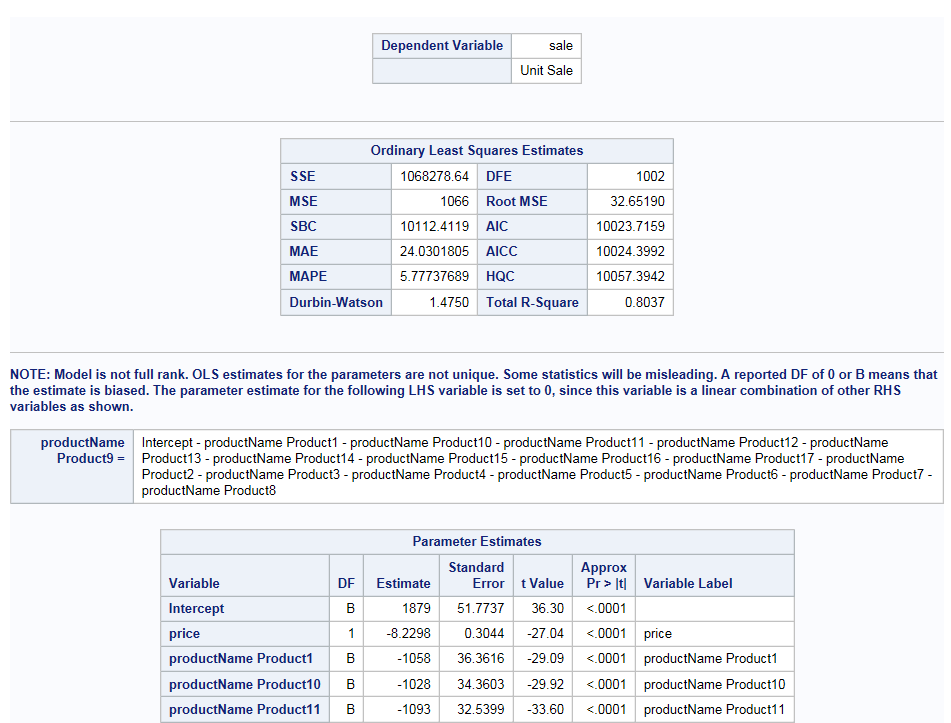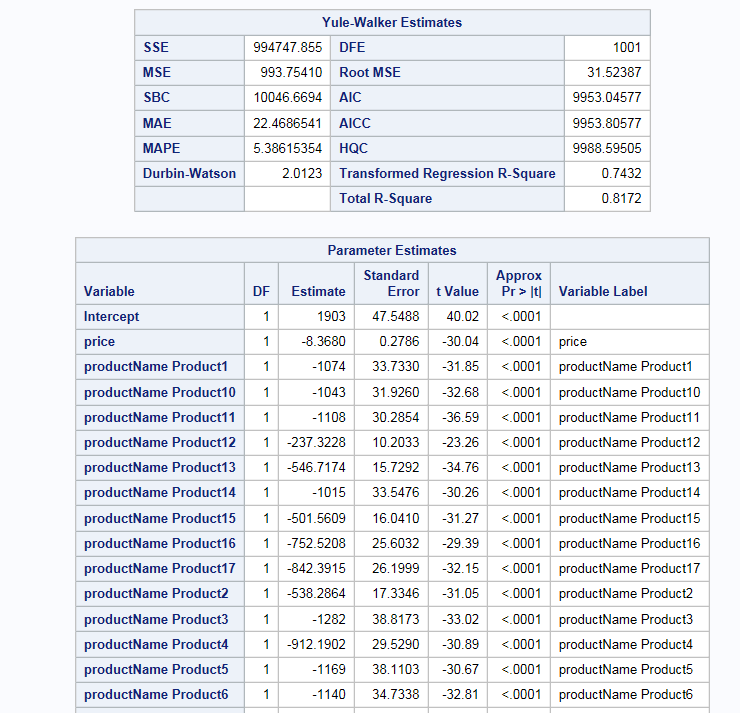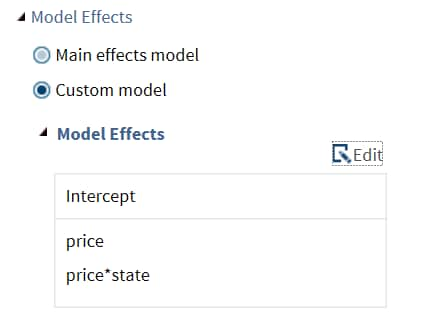Time Series Analysis for One Dependent Variable
Example: Analyzing Sales Data
To create this example:
-
TipIf the data set is not available from the drop-down list, click
 . In the Choose a Table window,
expand the library that contains the data set that you want to use.
Select the data set for the example and click OK.
The selected data set should now appear in the drop-down list.
. In the Choose a Table window,
expand the library that contains the data set that you want to use.
Select the data set for the example and click OK.
The selected data set should now appear in the drop-down list.
Assigning Data to Roles
To perform a time series
analysis, you must assign an input data set. To filter the input data source, click
 .
.
 .
.
You also must assign
a variable to the Dependent variables role.
|
Role
|
Description
|
|---|---|
|
Roles
|
|
|
Dependent
variables
|
specifies the dependent
variable for the analysis.
Note: You can assign more than
one dependent variable. The remaining task options differ slightly
if you have multiple dependent variables. For
more information, see Time Series Analysis for Multiple Dependent Variables.
|
|
Independent Variables
|
|
|
Continuous
variables
|
specifies the independent
variables for the model.
|
|
Categorical
variables
|
specifies the classification
variables to use in the analysis. The analysis produces a singular
model.
|
|
Additional Roles
|
|
|
Group analysis
by
|
specifies how to sort
the data. Analyses are performed on each group.
Note: This role is not available
if you have a categorical variable.
|
Setting the Model Options
You can display the main effects
model or create a custom model. To create a custom model, select the Custom
Model option, and then click Edit.
The Model Effects Builder opens. All continuous
variables and categorical variables are listed in the Variables pane.
-
To create a main effect, select the variable in the Variables pane, and then click Add.
-
To create a crossed effect, select the variables in the Variables pane. (You can use Ctrl to select multiple variables.) Then click Cross.
When you finish, click OK.
The effects that you specified now appear on the Model tab.
Here are the remaining
options on the Model tab.
|
Option Name
|
Description
|
|---|---|
|
Error Model Options
|
|
|
Automatically
select error process orders
|
removes insignificant
autoregressive parameters. The parameters are removed in order of
least significance.
|
|
Autoregressive
order (p), Maximum autoregressive order (p)
|
specifies the order
of the autoregressive error process.
|
|
Garch Conditional Heteroscedasticity
|
|
|
ARCH process
order (q)
|
specifies the order
of the process or the subset of ARCH terms to be fitted.
|
|
GARCH process
order (p)
|
specifies the order
of the process or the subset of GARCH terms to be fitted.
Note: This option is available
only if you specify the ARCH process order greater than 0.
|
|
GARCH model
type
|
specifies the type of
model.
Here are the valid
options:
Note: This option is available
only if you specify the ARCH process order greater than 0.
|
Setting the Options
|
Option Name
|
Description
|
|---|---|
|
Methods
|
|
|
Method
|
specifies the optimization
method to use. By default, no optimization method is used.
|
|
Maximum
number of iterations
|
specifies the maximum
number of iterations. The default is 100 iterations.
|
|
Tests
|
|
|
Tests for Autocorrelation
|
|
|
Generalized
Durbin-Watson test
|
runs the Durbin-Watson
test for the first order.
|
|
Tests for Heteroscedasticity
|
|
|
specifies tests for
the absence of ARCH effects.
Here are the valid
tests:
|
|
|
Tests of Normality
|
|
|
Bera-Jarque
normality test
|
specifies the Jarque-Bera’s
normality test statistic for regression residuals.
|
|
Tests for Independence
|
|
|
specifies tests of independence.
Here are the valid
tests:
|
|
|
Plots
|
|
|
You can choose to use
the default results, include selected plots in the results, or include
no plots in the results.
You can also include
these plots in the results:
|
|
Copyright © SAS Institute Inc. All rights reserved.



